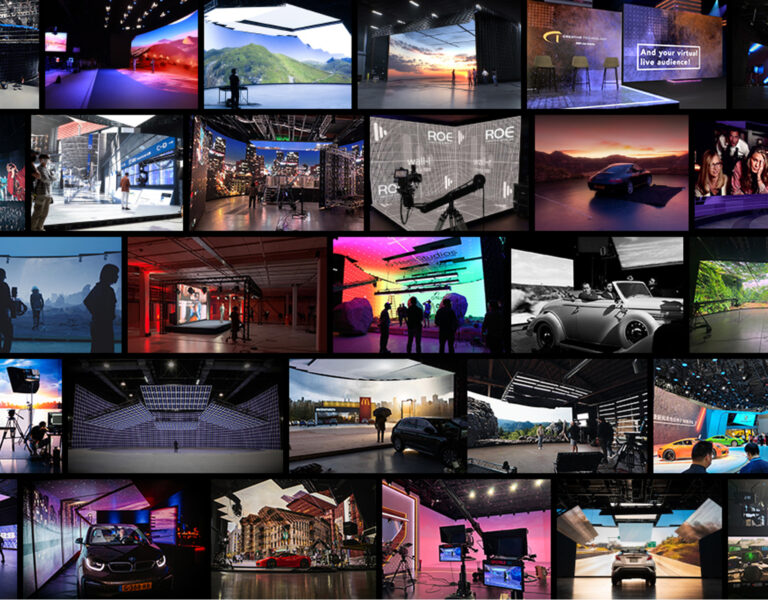Natdanai “Ham” Naksuwarn relished the challenge of shooting on 35mm celluloid for the first time when tackling postcolonial psychological horror Remains.
Remains follows a Windrush migrant who is employed as a servant on an estate – presumably to look after master and manor, including a collection of colonial artefacts, but soon discovers he was actually procured to be part of its most prized possessions.

British Cinematographer (BC): Why did you decide to study cinematography? Please tell us a little bit about your filmmaking journey so far, as well as your influences and inspirations.
Natdanai Naksuwarn (NN): I fell in love with filmmaking when I was 18. I knew that I really liked photography and telling stories, and going out with friends and making something together is so meaningful and joyful.
The moment I knew that I’d dedicate my whole life to cinematography was pretty special. My undergraduate teacher, Jakrawal Nilthamrong, screened the movie Children of Men, directed by Alfonso Cuarón and shot by Emmanuel Lubezki ASC AMC. I was immersed in the movie and convinced by everything that the camera led me to. And since I found out how technically challenging it was to craft those very simple shots to support the story and make it feel seamless, my life has never been the same.
BC: What were your initial discussions with director Theja Rio about the visual approach for your film? What look and mood were you trying to achieve?
NN: The first thing Theja told me before I signed up to the project was that he wanted to do a postcolonial psychological horror. I didn’t really know what that was, but I truly believed in Theja and his work. I’m not a big horror film fan but in the couple of months before we shot the film, I think I probably watched more horror films than ever before!
For Remains, Theja wanted the film to be based on realism and we wanted the visual approach to be very humble, yet very strong and faithful. Neither of us wanted Remains to be jump-scare horror and we both loved observational cinema, so we tried to create something that most other horror films wouldn’t do.
95% of all the shots were on sticks: the camera only moved for 5% of shots. We really wanted to save that movement for just the right moment, but at the same time we also wanted to create something visually meaningful and playful. That’s how the black void scene was born.
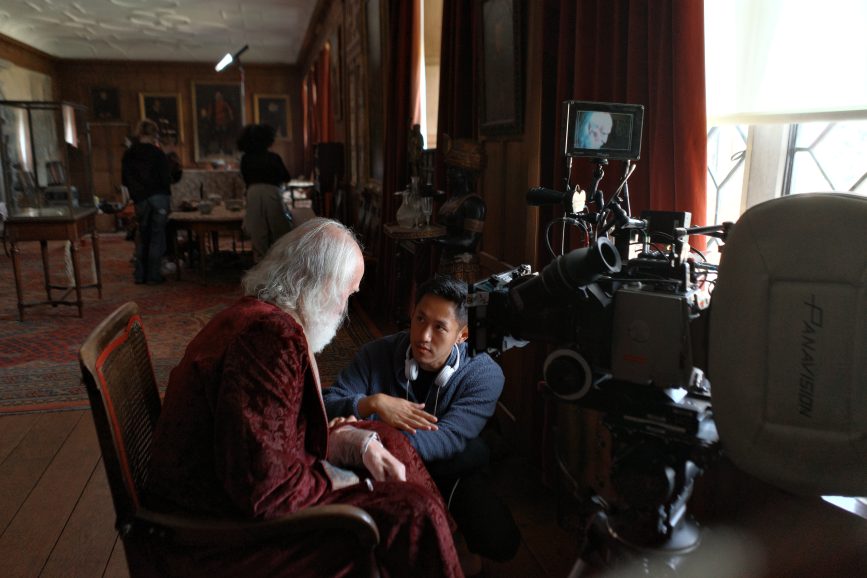
BC: What were your creative references and inspirations for your film? Which films, still photography or paintings were you influenced by?
NN: Theja and I did a lot of research into ‘60s-‘70s films and photography. I fell in love with a film called Ganja & Hess, a fantasy horror film from 1973. The textures, skin tone and the vibrant of Ganja & Hess were big inspirations for Remains.
We also looked at a lot of photography from James Barnor, the Ghanaian photographer known for his pioneering work capturing African and diasporic life, juxtaposed with images of Ghanaian immigrants in London during the 1960s and 1970s. This strongly related to the era and story that we were trying to speak about.
We also took a lot of inspiration from paintings. The main ones would be ‘Hypnosis’ by Sascha Schneider and ‘Ivan the Terrible and His Son Ivan’ by Ilya Repin.

BC: What filming locations were used? Were any sets constructed?
NN: Our main location was the manor house. It was very tricky to find the right one due to all the restrictions that we had. After we’d found a gorgeous manor house in Southampton that we fell in love with, we then had to find all the other locations that would logically and geographically match the main one.
We ended up shooting for three days in the manor house in Southampton; two days in the servant’s room; one half day for the auction scene, where we transformed an old converted church into our location; and another day at my favourite location, for the black void scene that Aurora Melpignano, our legendary production designer, put so much effort into with such a limited time and resources and made it comes to life.
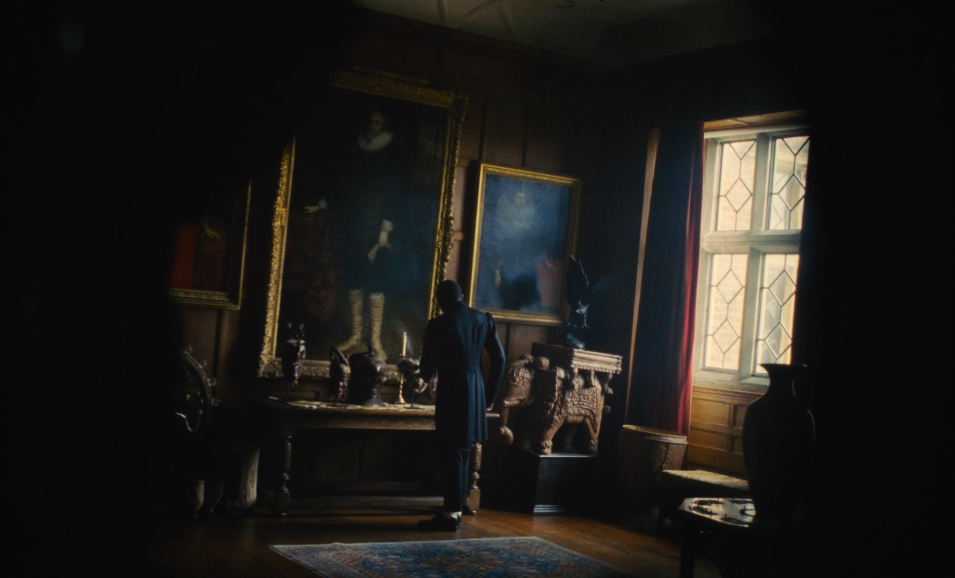
BC: What camera and lenses did you choose and why? What made them suitable for this production and the look you were trying to achieve?
NN: We were very fortunate that we won the pitch and got sponsorship from Kodak. This meant we got to shoot our film on 35mm. We thought that we needed more of a challenge, so we decided to shoot our film on three-perf, which only gave us around two-three takes for each setup. Luckily Theja was such a precise director that we easily got over it.
It was such a dream comes true for me to get to shoot on Panavision for the first time. The people at Panavision were super giving and gave me a lot of good advice, as well as new perspectives on the way I worked on the project. It was a luxury as a cinematographer to have this kind of support. Thank you, Vicky, Kate, Kirsty, Rohum and Aaron for the heart-warming support. Thank you too to my legendary camera team – Gareth Young (first AC), Ryan Tiernan (second AC), Daniel Hempenstall (loader) Ash Leontyne and Josh Wooster (additional AC) – for trusting me and always supporting and riding along with me no matter where I wanted to go.
We went with the Panavision Millennium XL2, which was a real workhorse, and with Panavision Primo lenses. I think they were such a great pairing and truly the best choice for the project. They produced very rich colours and superb contrast quality.
We also used the Panavision Primo Zoom 24-275mm in some scenes which could intercut seamlessly with the Primo Prime. I used Black Diffusion FX filters because they are always my go-to and I would feel lost without them.
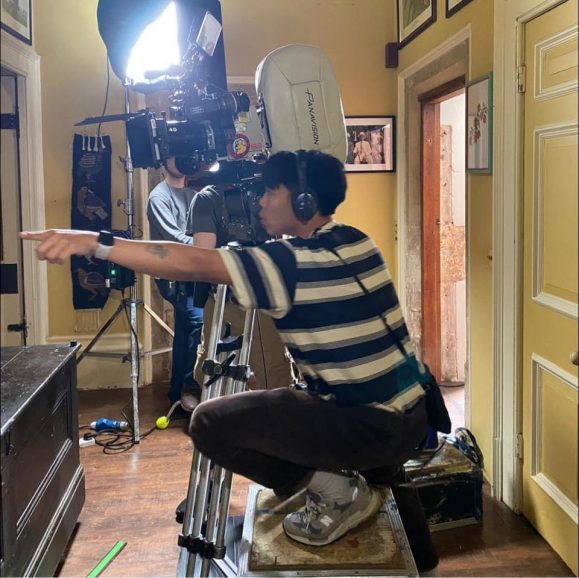
BC: What was your general approach to lighting?
NN: Some of the scenes were naturalistic, while others were impressionistic. This film was such a great opportunity to play with lighting because the script allowed me to experiment with different approaches. My main goal on this project was for the film to be very, very, very dark, but since we were shooting on celluloid I needed to be very aware of the details on the faces, skin and the details in the shadows.
BC: What was the trickiest scene to light?
NN: This is a very tricky question for me. It would be much easier for me if the question was, “What was the easiest scene to light?” There was not a single scene that was easy to light.
My struggles were that the location was so massive and full of big windows; I was having to shoot day for night; and most of the scene did not take place on the ground floor. Luckily, I had Harrison Newman, one of the best gaffers I’ve worked with, who got me out of this pain.
The trickiest scene was the climax scene, where we had to create eight black tents for the 15ft-tall window. We also had to make space for the moonlight ambience to come in for each window… And if that still sounds too simple, we then added lightning effects on top as well. It also rained and was super windy outside which added a lot of difficulty to the process. Thank you to the best lighting team (Ardi, Aga, Jeff, Filipe, Will, Heather, Q) for getting through those tough times together with me.
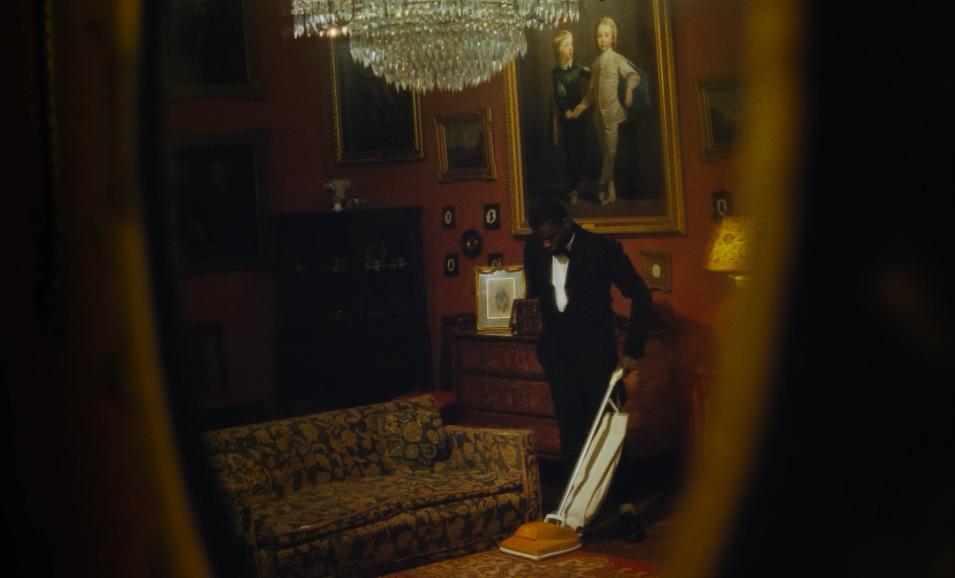
BC: Who did the grade and what look did you want to achieve?
NN: I graded this film with Mara Ciorba from CHEAT. She’s also an NFTS graduate, but a year above. Like I said earlier, Theja and I took a lot of influence from film and photography from the ‘60s and ‘70s. We wanted to stay true to the amazing colour palette that Aurora, our production designer, had worked so hard to create. I also have specific taste in the shades of red and orange that I like. We wanted to be very bold on the vibrancy the contrast and the shadow details. After spending a couple of minutes explaining what we wanted to achieve, Mara just jumped in and worked her magic immediately. She brought our film to a better place.
BC: What is your proudest moment from the production process?
NN: Every time I turned around and saw smiles on my crew’s face.
BC: What lessons did you learn from this production that you’ll take with you onto future productions?
NN: Remains was my first project to be shot on 35mm film, so there were times where I played it safe. I really can’t wait to shoot on 35mm again because I will be much bolder and trust in the magic of celluloid.
I’m normally not a heavy-prep guy but I want to be more communicative in pre-production, try to make the film on the pre-production table and be open to trying more things on the shooting day.

BC: What would be your dream project as a cinematographer?
NN: My dream project for me is a film that speaks out for minorities and helps change society. Film is such a demanding art form that requires a lot of resources like money and time. So, I want to be part of the projects that are aware and care about who we’re speaking for.
BC: Is there anyone not yet mentioned that you’d like to highlight?
NN: I want to mention Oliver Stapleton BSC, Stuart Harris BSC and Duncan Bruce for such an amazing time of my life. Thank you to all my classmates: Edward, Bart, Owen, Adam, Jake, Roo, Essi, Bea, and Sunshine for being big inspirations for me to grow. Cine 2021, my always second year. Cine 2023, for making me realise that I’m getting old. And RJ, Gen and Emmy for making me proud of myself.
Read the rest of our series spotlighting the NFTS’ 2024 cinematography cohort.

